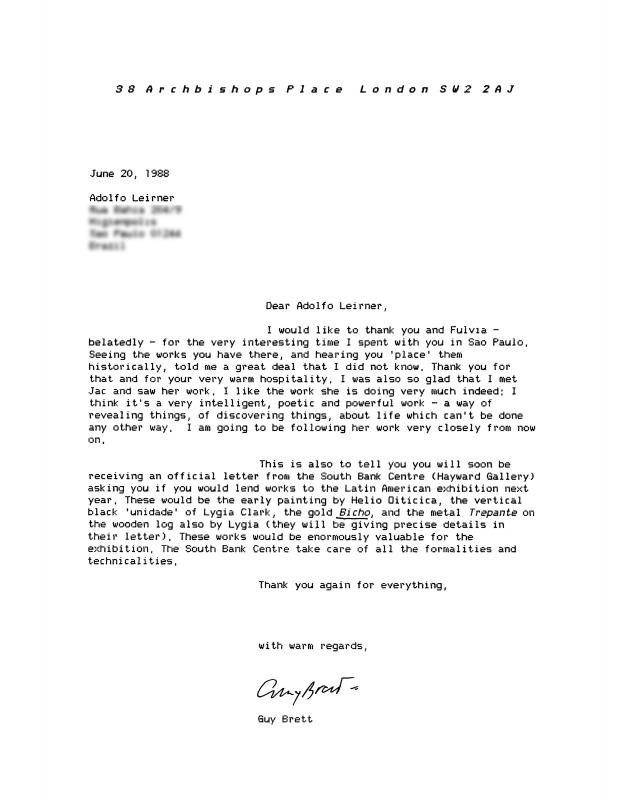The London-based art critic and curator, Guy Brett (born 1942), played a major role in introducing a generation of Brazilian Concrete and Neo-Concrete artists to European and American audiences. (For other examples of his writings, consult documents #1232285 and #1232349.) A case in point is this essay published in Art in America in 1994 about the artistic career of Lygia Clark (1920–1988). As Brett declares in his opening lines, before this essay Clark had not been widely known among U.S. American audiences. In fact, this is one of the few essays that, by the mid-1990s, had been published in English about Clark’s work (see also #1232662). Not long after this article was printed, the journal October published a special Lygia Clark dossier edited by Yve-Alain Bois in 1994.
Some of the works and series discussed in this essay include: the Borrachas [Rubber Grub] series, 1960s; the Bichos [Critters, translated here as Animals] series, 1960s; Ar e pedra [Air and Stone], 1966; Máscara sensorial [Sensorial Hood], 1967; O eu e o tu: roupa/corpo/roupa [The I and the You: Clothing/Body/Clothing], 1967; Baba antropofágica [Anthropophagous Drool], 1973; and the “Relational Objects” she used in her psychotherapy sessions starting in the mid-1970s. Furthermore, the essay is illustrated with black and white as well as color photographs of some of her most important works, including an installation view of the special room dedicated to her oeuvre at the XXXIV Venice Biennial in 1968. (For a document related to the Brazilian participation in this exhibition, see #1232444.)


